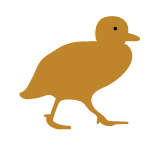From the iconography of the Roman Empire to the coat of arms in a courtroom, and from the Renaissance to the Internet, visual media have been integral to the expression and communication of legal ideas. Studying works of visual art allows us to delve deeply into our legal values and ideologies. While artists have often turned the spirit of justice and the power of the law into visual form, they have also been prominent critics of it. Injustice and suffering are given a vivid presence and emotional weight through the visual arts, in ways that have often led the law to fear its capacity to disturb and challenge us.
This course introduces students to a flourishing new area of transdisciplinary study. It provides an overview of key texts that introduce theories and methods in law and visual studies. The course then explores a diverse range of topical case studies that examine law through art and art through law, including themes such as Justice, Power, Ideology, Colonialism, Environment, and War. Students will embark on an intellectual journey from the Ghazi Stadium in Kabul to the Supreme Court of Mexico, and from nineteenth-century Van Diemen’s Land to contemporary Australian masterworks. Throughout this journey, students will learn to perceive both law and art through new perspectives, fundamentally transforming their understanding of these fields.
To develop their knowledge and skills, students will engage in a range of learning activities, including seminars, group projects and research work.
Learning Outcomes
Upon successful completion, students will have the knowledge and skills to:
- Evaluate, compare and critically analyse a complex variety of textual and visual sources.
- Compare and appraise research and methods in the fields of legal theory, law, visual studies and art history, with specific reference to the case studies chosen during the course.
- Evaluate and critically reflect on scholarship and critical approaches to law and justice as these are raised, explored, and depicted in both historical and contemporary visual materials.
- Explore and critically reflect on key contemporary debates shared across the disciplines of law and visual studies including sovereignty, ideology, aesthetics, iconography, and identity.
- Develop independent research skills by planning and executing advanced transdisciplinary research in the area of law and visual studies.
Indicative Assessment
- The proposed means of assessment for this course will provide students with at least two pieces of assessment, including one piece during the teaching period. More information about the means of assessment, including the relationship between the assessment and the learning outcomes of the course, will be available in the class summary and on the course WATTLE page. (100) [LO 1,2,3,4,5]
The ANU uses Turnitin to enhance student citation and referencing techniques, and to assess assignment submissions as a component of the University's approach to managing Academic Integrity. While the use of Turnitin is not mandatory, the ANU highly recommends Turnitin is used by both teaching staff and students. For additional information regarding Turnitin please visit the ANU Online website.
Workload
- Classes offered in non-standard sessions will be taught on an intensive base with compulsory contact hours (approximately 36 hours of face to face teaching). The course will also require advanced preparation through assigned readings. In total, it is anticipated that the hours required for completion of this course (class preparation, teaching and completion of assessment) will not exceed 120 hours.
- Classes offered during semester periods are expected to have three contact hours per week. Students are generally expected to devote at least 10 hours overall per week to this course.
Click here for the LLB Program course list
Inherent Requirements
N/A
Requisite and Incompatibility
Prescribed Texts
Students must rely on the approved Class Summary which will be posted to the Programs and Courses site approximately two weeks prior to the commencement of the course. Alternatively, this information will be published in the Program course list when known.
Preliminary Reading
Students must rely on the approved Class Summary which will be posted to the Programs and Courses site approximately two weeks prior to the commencement of the course.
Fees
Tuition fees are for the academic year indicated at the top of the page.
Commonwealth Support (CSP) Students
If you have been offered a Commonwealth supported place, your fees are set by the Australian Government for each course. At ANU 1 EFTSL is 48 units (normally 8 x 6-unit courses). More information about your student contribution amount for each course at Fees.
- Student Contribution Band:
- 34
- Unit value:
- 6 units
If you are a domestic graduate coursework student with a Domestic Tuition Fee (DTF) place or international student you will be required to pay course tuition fees (see below). Course tuition fees are indexed annually. Further information for domestic and international students about tuition and other fees can be found at Fees.
Where there is a unit range displayed for this course, not all unit options below may be available.
| Units | EFTSL |
|---|---|
| 6.00 | 0.12500 |
Course fees
- Domestic fee paying students
| Year | Fee |
|---|---|
| 2026 | $5520 |
- International fee paying students
| Year | Fee |
|---|---|
| 2026 | $6660 |
Offerings, Dates and Class Summary Links
ANU utilises MyTimetable to enable students to view the timetable for their enrolled courses, browse, then self-allocate to small teaching activities / tutorials so they can better plan their time. Find out more on the Timetable webpage.


